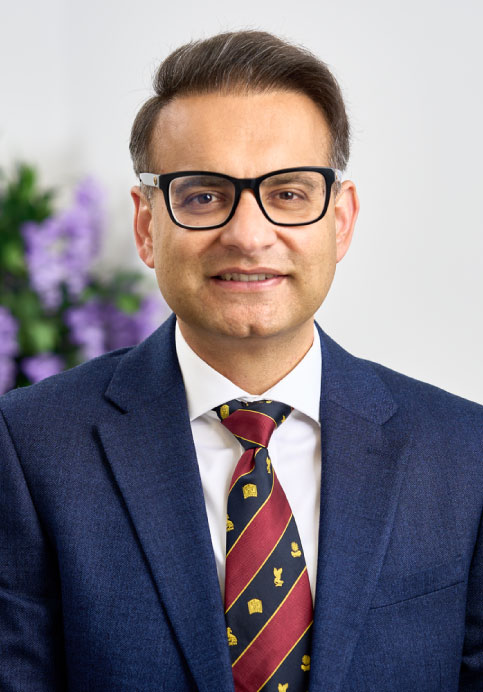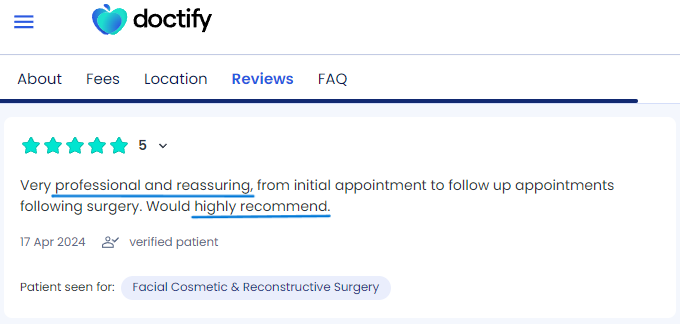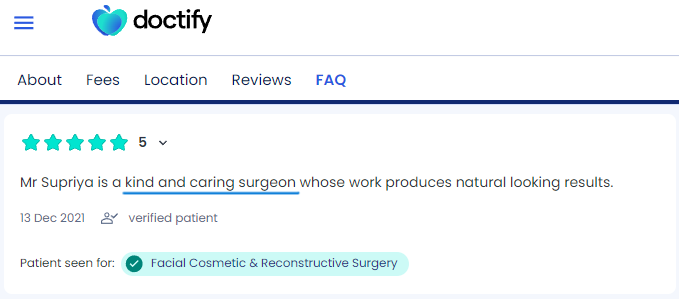A dorsal hump (nose bridge bump) is one of the most common nasal concerns people notice about their profile. It appears as a raised area along the bridge of the nose, often visible from the side and can vary from a small irregularity to a more pronounced feature that changes the overall balance of the face.
While it does not usually cause functional issues, many individuals seek treatment because the hump can draw attention away from the rest of their facial features. At British Face Clinic, we offer carefully planned treatments to address the dorsal hump with precision.
By refining the nasal bridge and restoring smoother contours, our goal is always to achieve a natural result that enhances the harmony of the face rather than altering its character.
What Is a Dorsal Hump?
A dorsal hump is a raised area of bone, cartilage, or both, located on the nasal bridge. Sometimes it is barely visible from the front but becomes more noticeable from the side. In other cases, the bump creates a strong feature that dominates the profile. While it is a common characteristic, especially in certain ethnic groups, treatment is often sought to create a smoother bridge and a more balanced look.

Treatment for a dorsal hump (nose bridge bump) can smooth the nasal bridge and enhance overall facial proportions.
What Causes a Dorsal Hump?
A dorsal hump (nose bridge bump) can develop for several reasons:
- Genetics: Many people inherit the structure of their nasal bone and cartilage from family traits, meaning they are born with the potential for a hump.
- Development During Adolescence: The hump can become more pronounced as the nose matures, since bone and cartilage continue to grow into the late teenage years.
- Trauma or Injury: A broken or injured nose may heal unevenly, leaving behind a new or more visible bump.
- Structural Imbalance: Sometimes the hump appears more prominent because of the proportions of other nasal features, such as a smaller nasal tip or small chin.
- Changes Over Time: Less commonly, ageing alters the nasal structures and surrounding soft tissues, making an existing hump more defined.
When Should You Consider Treatment?
Treatment may be worth considering if the dorsal hump (nose bridge bump) creates an uneven profile or draws attention away from other facial features. Many patients report noticing the bump most clearly in photographs taken from the side or when comparing the bridge to the tip of the nose. If this is something that bothers you, surgical options can refine the nasal bridge and restore a smoother contour in line with your goals.

Surgical options for a dorsal hump nose include closed, open and preservation rhinoplasty techniques.
How We Treat Dorsal Humps
At British Face Clinic, we use advanced rhinoplasty techniques to treat a dorsal hump (nose bridge bump). The choice of procedure depends on the size of the hump, the nasal structure and the desired outcome.
Closed Rhinoplasty
Closed rhinoplasty is often selected for smaller or less complex humps. All incisions are made inside the nostrils, leaving no visible scars. This method allows for careful adjustment of bone and cartilage to smooth the nasal bridge. Because there is less disruption to surrounding tissues, recovery can sometimes be quicker, making it a suitable option for straightforward cases.
Open Rhinoplasty
For larger or more complex dorsal humps, open rhinoplasty provides the best visibility and precision. A small incision is made across the columella (the strip of skin between the nostrils), giving the surgeon full access to the nasal framework. This approach allows for detailed reshaping of bone and cartilage to achieve a smoother contour. it is often the preferred choice when significant correction is required.
Preservation Rhinoplasty
Preservation rhinoplasty is an approach that smooths or reduces a dorsal hump while conserving much of the nose’s natural support. Rather than removing large portions of bone and cartilage at the surface, the structures are adjusted or repositioned by removing bone and cartilage from the lower part. This technique helps maintain nasal stability and delivers a natural-looking result, making it an excellent option for patients seeking refinement without major alteration of their nasal character.
Tailored Planning for Natural Results
Every nose is unique, so treatment planning is always individualised. During your consultation, we will assess the size and shape of your dorsal hump (nose bridge bump), the overall nasal structure and the balance of your facial features. From this, we recommend the most appropriate surgical approach to create results that are both refined and natural-looking.
Meet Mr Mrinal Supriya

FRCS (OTOL-HNS), MRCS Ed, DO-HNS, MS in ENT, MBBS
Mr Mrinal Supriya is the Divisional Director of Surgery. He is highly experienced Head and Neck Surgeon, specialising in facial cosmetic surgery. He is the Divisional Director for Surgery at NGH in Northamptonshire and works as an ENT Consultant.
Mr Supriya is also the lead head and neck robotic surgeon at the University Hospital of Northamptonshire (2023). Previously, he held consultant positions at St. George’s University Hospital, London and Ninewells University Hospital, Dundee.
Mr Supriya has extensive experience in top hospitals around the world, including the UK, Australia and the USA. He has trained with Dr. Andrew Jacono, one of the top facelift surgeons in the USA. Mr Supriya is among the 30 surgeons certified by the Royal College of Surgeons to provide facial cosmetic surgery in the UK (2022).
Why Choose Us for
Your Dorsal Hump Treatment?
Your treatment at British Face Clinic is led by Mr Mrinal Supriya, a consultant surgeon specialising exclusively in facial procedures. With years of experience in both the NHS and private practice, he provides open, honest advice and carefully planned outcomes.
- Facial Focus Only: A clinic dedicated solely to facial surgery.
- Consultant-Led Care: All consultations and treatments are personally carried out by Mr Supriya.
- Natural Emphasis: Techniques chosen to enhance harmony, not to change your identity.
- Ethical Approach: Clear guidance, transparent pricing and no pressure to proceed.
- Recognised Expertise: One of the UK’s most experienced surgeons in the field.
Ready to Take the Next Step?
If you are considering treatment for a dorsal hump (nose bridge bump), the first step is a consultation. Arrange a free initial phone consultation with our team to discuss your goals and learn which surgical options are most suitable. Together, we can plan a treatment that helps achieve a smoother, more refined nasal profile.
Patient Stories
It’s embarrassing looking tired at work, and social events aren’t so fun when your confidence and self-esteem are lacking. You’ve neglected yourself and feel inadequate compared to all the beautiful people around you. You deserve some self-love.
Take your first step and step into a more beautiful you!
Frequently Asked Questions
What causes a dorsal hump on the nose?
A dorsal hump (nose bridge bump) is most often caused by genetics, but it can also result from injury, uneven healing, or structural imbalance in the nose. In some cases, changes over time can make an existing hump appear more defined.
Can you fix a dorsal hump without surgery?
Non-surgical options, such as fillers, can temporarily smooth the appearance of a dorsal hump nose by balancing the profile. However, these treatments do not remove the hump, and the results are not permanent.
Which is better for a dorsal hump, open or closed rhinoplasty?
In Mr Supriya’s practice, Closed rhinoplasty can work well for smaller or simpler humps where nasal tip alteration is not required as it involves internal incisions only. Open rhinoplasty is usually preferred for larger or more complex cases where full access to the nasal structure is needed, particularly if nasal tip changes are required. The choice between these approaches is primarily based on the operating surgeon’s training and experience.
What is preservation rhinoplasty for a dorsal hump?
Preservation rhinoplasty is a technique that reshapes the nasal bridge while conserving much of the natural bone and cartilage at the surface. Bone and cartilage are removed from the lower part (i.e. towards the floor of the nasal septum) to lower the nasal dorsum. This approach aims to create a smoother profile with long-term stability and a natural appearance.
How long is recovery after dorsal hump surgery?
Most people experience swelling and bruising for the first couple of weeks, with gradual improvement over several months. Full results are typically seen once the tissues settle, which can take up to a year.
Our Locations
- London City
The Wellington Hospital, 15 – 17 Lodge Road
London NW8 7JA
- London City
98 Harley Street
London, W1G 7HZ
- Milton Keynes
Athena Surgical Centre
16 Davy Avenue, Knowlhill
Milton Keynes, MK5 8PL
- Northampton
The Three Shires Hospital
The Avenue
Northampton. NN1 5DR
London City
The Wellington Hospital
15 – 17 Lodge Road
London NW8 7JA
London City
98 Harley Street
London, W1G 7HZ
Milton Keynes
Athena Surgical Centre
16 Davy Avenue, Knowlhill
Milton Keynes, MK5 8PL
Northampton
The Three Shires Hospital
The Avenue
Northampton. NN1 5DR





